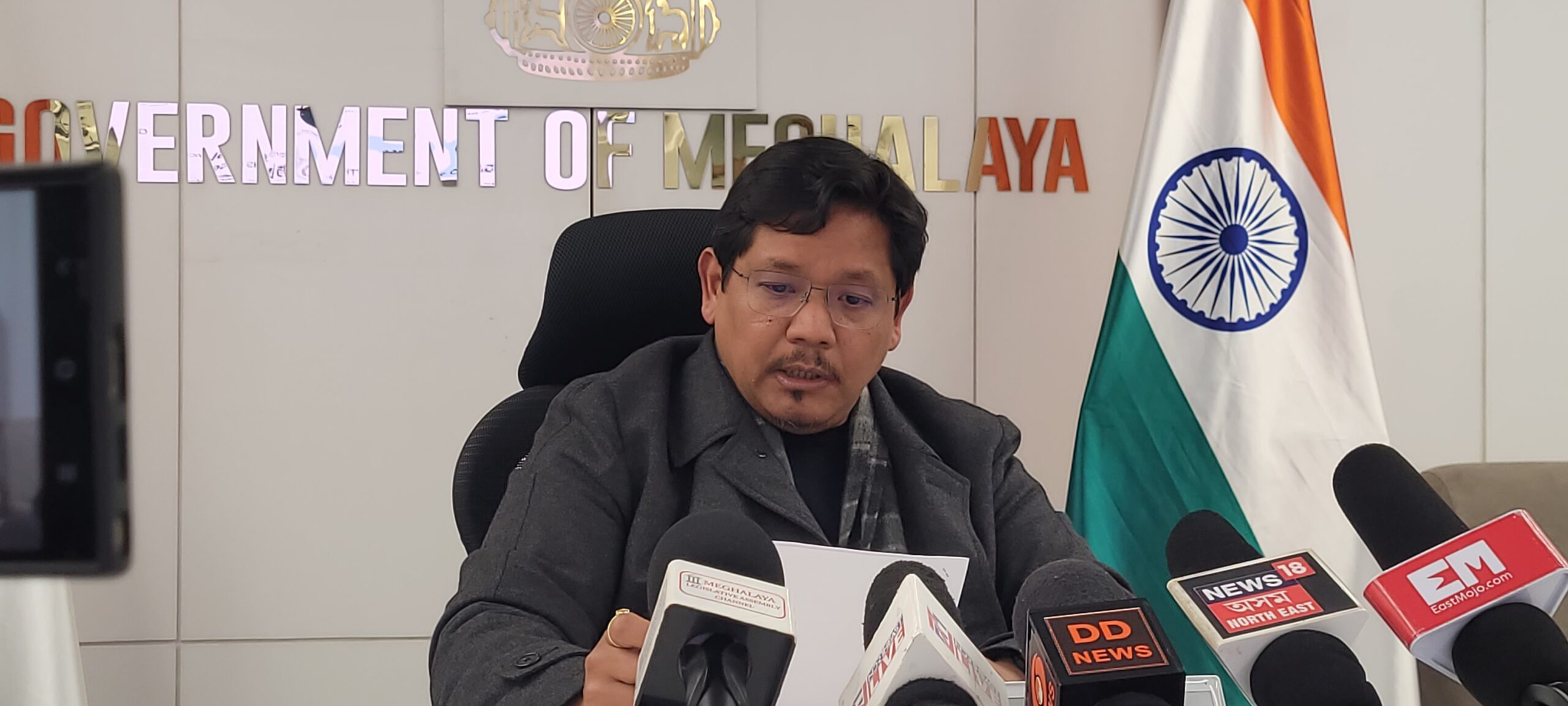Chief Minister Conrad Sangma on Tuesday said the state is actively exploring structural reforms in Meghalaya’s education system, calling the idea of reducing school categories “very desirable”—though riddled with complexities that require deep consultation with all stakeholders.
“Well, it is very desirable. Very, very desirable. And I use the word desirable because we see the benefit in it. But it is very sticky at the same time because obviously each category has got its own complex problems,” Sangma said, referring to the fragmented system of school categorization that currently exists in the state.
He admitted the government has begun preliminary discussions and sent letters to colleges and schools not to enforce change, but to diagnose complications. “They of course, after getting the letters, they are concerned that the government is going to take some drastic measures. It’s not. We’re just simply trying to understand the situation, the complication,” he said.
Sangma explained the reform process would be deliberate. “Diagnosis is going on. Yes, it is desirable that we should have lesser categories of schools because it’s easier to structure the system, easier to manage the system and it gives a much more uniform approach… But as I said, it’s not that simple,” he added.
On the issue of improved education outcomes, the Chief Minister expressed deep satisfaction with the impact of the “CM Impact” booklet, a question bank designed to help Class 10 students prepare effectively for their board exams.
“When I launched this CM Impact book, I had clearly mentioned… all exams, whether it’s civil service exams, IIT, IIM, or even GMAT, there’s a process in which every exam is cracked… and therefore we took a page from there,” he said, adding, “This may be one of the most satisfying and happy moments for me… to see the kind of results that have come.”
Sangma shared that the idea behind the booklet was not to hand students a shortcut but to give them structure. “Even if the booklets are there, it does not mean you’ll automatically learn everything… you have to study. We only allowed the system to structure in a manner that it will be easier for them,” he said. “I give credit to the students. They have worked. They have spent time.”
He further reflected on the emotional toll of students failing Class 10: “That could be maybe the beginning of the end of the dreams that he or she may have had… It really used to bother me.”
Sangma called for flexible mindset among students pursuing higher secondary education: “Yes, we may all want to be in the premier institutes… but there will not be room for everyone… so I urge the students, like we all do for college admissions… have option A, option B and option C.”
The government is also working to increase capacity in higher secondary schools. “We have already started discussions in that aspect also… whether it’s government or private or government-aided schools, we are working and discussing with them to have more courses for the higher secondary admission,” he stated.
He acknowledged the structural hurdles, citing an example where a single school building houses four categories—SSA, ad hoc, deficit, and government—thereby affecting resource allocation and rankings. “In the same campus, in the same building… you have four schools. Technically it’s one school… but because of the categories, the same facility is divided among four schools,” he explained.
On improving the state’s PGI (Performance Grading Index) scores, Sangma said: “Education is a very, very complicated subject… We need to untangle the knots but do it in a manner that it doesn’t disrupt the system too much.”
He stressed that real reform begins with an honest diagnosis. “For us to be able to take the right steps forward to resolve a problem starts with the correct diagnosis of the problem… that’s why we went into this entire CM Impact mode.”
“I must congratulate all the students who have passed and I encourage those who didn’t make it—this is not the end. Continue to work hard. You will be successful in the exams,” Sangma said.


